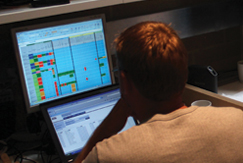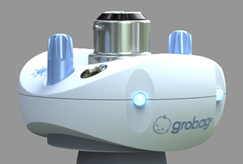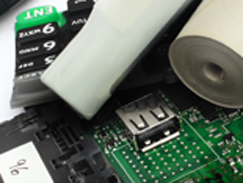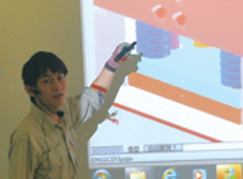The use of sketching at the start of the design process is an emotive issue. Many argue that the only way to form ideas and explore concepts is by using the traditional method of pen and paper.
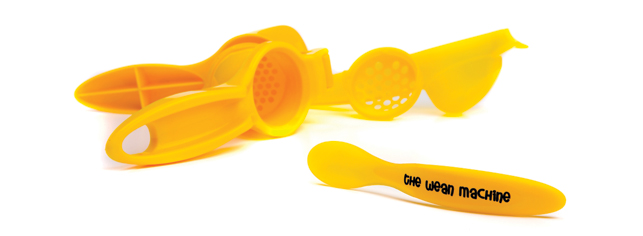
The Wean Machine – just fill, squeeze and feed
However, for over twelve years 3form Design (3fD), a product design consultancy based in Andover, UK, has thrown away these tools and jumped straight into CAD creating what company founder Austen Miller calls “3D sketching”.
“We set up 3form Design in 2000 and very quickly we had a portfolio of some very big names including Proctor & Gamble, Oil of Olay, Vicks and Vidal Sassoon. They gave us a lot of volume very quickly and it’s all to do with the fact that we threw away our marker pens,” he explains.
Miller is a qualified mechanical and production engineer who has always been interested in CAD. He remembers the early days of CADDS-5, CAD/CAM technology from Computervision, when computers were so slow that he would have to get up in the middle of the night to check on his rendering. However, when he was introduced to SolidWorks in 1998 he found a tool that suited both his engineering and creative side. He has never looked back.
Having set up his own consultancy Miller decided to do things differently as he was dissatisfied with the conventional design process that started with designer sketches and mock up models all done in traditional manual lay ups. In his view, doing it this way brought about a new stage in the CAD revolution – reverse engineering – where the information from the designer’s sketch had to be inputted into the computer by the engineer. This often resulted in loss of design intent.
So, Miller started using 3D sketching, which essentially involves creating and exploring form in digital 3D. “Not only does it do away with reverse engineering but also offers real advantages in the early stages of conceptual studies,” he explains. “As well as holding on to the real life constraints of size and scale we can explore shape, colour and texture extremely rapidly.”
Jump into cad
The typical design process at 3fD begins with a theoretical debate around the white board that quickly moves into SolidWorks. Here designers create a space model of the components within a product giving them a fixed constraint they can work within. “The trick is to not get sucked into the engineering of it but to actually make visuals that have got engineering implications in them,” says Miller.
“The problem with CAD is that people are drawn into the detail. If you want to deliver a product on time you have to work out basically what you are trying to deliver and by when and do it like a layer cake.
“We always talk internally about the size of the brush you are using – broad, medium or fine. In the sketching process you have to learn what is important and what isn’t. Once you’ve figured out what is important, your sketching stage gets extremely fast,” he adds.
Doing it this way works very successfully for 3fD and Miller doesn’t succumb to the argument that by jumping straight into CAD stifles creativity. In his opinion, just like pen and paper, CAD is a tool and depends whose hand it’s in as to the end result. “Creativity should not be measured by the medium we choose but how successful we can be with it,” he comments.
So, having established a successful 3D-based design company, Miller in 2003 decided to extend the business model to offer manufacturing too. Working with factories in China and from offices in Dongguan, 3fD’s engineers and logistics staff are able to coordinate supply chains throughout the Far East.
However, this turnkey design and manufacturing service didn’t happen overnight. “The first time I set out to manufacture in China I lost a lot of money and we have many bumps and bruises to show for it,” confesses Miller. “I’m not saying that when we first started it is as good as it is now but having people out in China working as part of our pay roll makes it a lot easier to get things done.”
Bright spark
The project that really kick started them into setting up a manufacturing base in China was the Grolight. With this product, 3fD had to help the client turn a ceiling light into an intelligent nightlight for a child’s bedroom.
Working with mains power, a bulb is clicked into a device that is hung from the ceiling socket. When the light switch on the wall is flicked by the parent, the Grolight is dim and when flicked again it is brighter. However, this is all controlled by the light itself with information received from environmental sensors.
3fD began by creating a space model so that the components were known before starting on the styling. By doing it this way they soon realised that the design required the standard lighting cap to be recessed in the unit. In order to achieve this 3fD decided to design the mould tools for the toolmaker in order to make it possible to produce. By dealing with these issues early on it meant that they wouldn’t become production issues later.
“Right from the word go we were designing the production of the equipment to support our concept. So even before we got into engineering we have already split the project into a) develop the product and b) develop the tools to make the product,” says Miller.
Food for thought
Having ownership over the design and manufacturing process has enormous benefits for 3fD. A project that demonstrates these benefits is the Wean Machine, which has been designed, engineered, tested, certified and manufactured for client Jackson Beazeley.
This portable and compact product comprises an all-in-one bowl, spoon and mashing system that enables fresh baby food to be prepared instantly. The parent or guardian simply has to fill the bowl, squeeze down and feed the infant with the spoon. Reaching over 100,000 in its first year of launch in 2010, the Wean Machine is now exported to over 64 countries.

Designed, manufactured and boxed to over 64 countries
Miller argues that the only way 3fD could have designed such an innovative solution to the client’s brief was by designing the tooling for it concurrently. Multiple wall thicknesses and challenging undercuts were only possible because the moulding tools were created alongside the design. As Miller says, the concept goes against all of the rules of how to make an injection moulded part.
“By designing the tools in-house and working via our manufacturing scope we can champion the manufacturing to actually represent what it should have been from the start,” says Miller.
“If this had been given to another manufacturer they probably would have put little ejectors in and pushed it off the core, which would have left circle marks from the ejector pins. But clearly we didn’t want that so we created special ejector forms and also redesigned the injection nozzles so that the product in all its simplicity was not spoilt by these usual manufacturing ‘finger prints’,” he adds.
3fD has since designed and developed the 360 Wean Cup, a spill proof drinking cup of which 3fD owns the intellectual property, and is also working on a new design for the Wean Machine product that optimises both the materials and design. “It’s in our own interest to ensure that if somebody comes up with another Wean Machine that this one is bigger and better than theirs and to always stay ahead of the competition,” comments Miller.
The whole package
As the manufacturer, 3fD ensures that the products are certified, boxed according to where they’ll be distributed in the world and also runs logistics. “In the first year 100,000 were sold and in second year 240,000. It’s in our interest to help that to keep climbing. We also want to lower the cost and that is part of the reason for stripping plastic out of the new design. It’s not to increase our margins, it’s to reduce the cost of the product because it will sell more,” says Miller.
Another example of where 3fD made use of its turnkey solution was for client MIURA Systems. The brief was to create a handheld electronic payment system that could be used by individuals or small businesses such as tradesmen, taxi drivers, market stall holders and gardeners in any location. It not only had to be compact, reliable and secure but also include a printer, integrated rechargeable battery and magnetic swipe for the payment card not to mention the circuit board and the rest of the electronics.
In order to really optimise the form to achieve all the functionality required, the product and tools were designed alongside each other. By doing this 3fD managed to shoehorn 21 mechanical parts into a small handset that is both robust, waterproof and weighs in at just 275g.
“It was worth our while to get up at midnight on a Sunday to solve a problem that was coming in from China because there were big values involved and there is good revenue over many years. Although we probably won’t see the return on our investment for a couple of years nonetheless it will arrive.
“Also, once other people understand the benefits of working with us, other products will hopefully spring from this business model,” says Miller.
Although 3fD offers design for manufacture it doesn’t represent all that it does.
“With some clients we work on a turnkey model and with others on a traditional model,” says Miller. The consultancy also gets involved in concept design work for a variety of companies including longstanding clients AGA and Rangemaster as well as R&D projects for the likes of Speedo and Unilever.
Forward planning
Having built up its manufacturing capability Miller now has plans to involve other design consultancies. “One of the things I’d like to do in the near future is use our manufacturing capability and the marketing network we have started to set up. Inside every design company is a toy chest of product ideas which isn’t worth a cent unless it can be sold and the hardest thing is to have that marketing avenue open to you,” says Miller.
“So, I’m hoping that soon we’ll be able to collaborate with other design companies to manufacture products so they can get a revenue stream through it and so expanding our business model further.”
Although 3fD is a small company it has the ability in-house to design products with beautiful forms, devise clever mechanisms and even create innovative machines and tools for the production of products. “Design consultancies are evolving – there are new design companies out there and we are one of them,” says Miller.
www 3formdesign.com
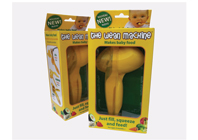
3fD discards pen and paper in favour of 3D CAD
Default


